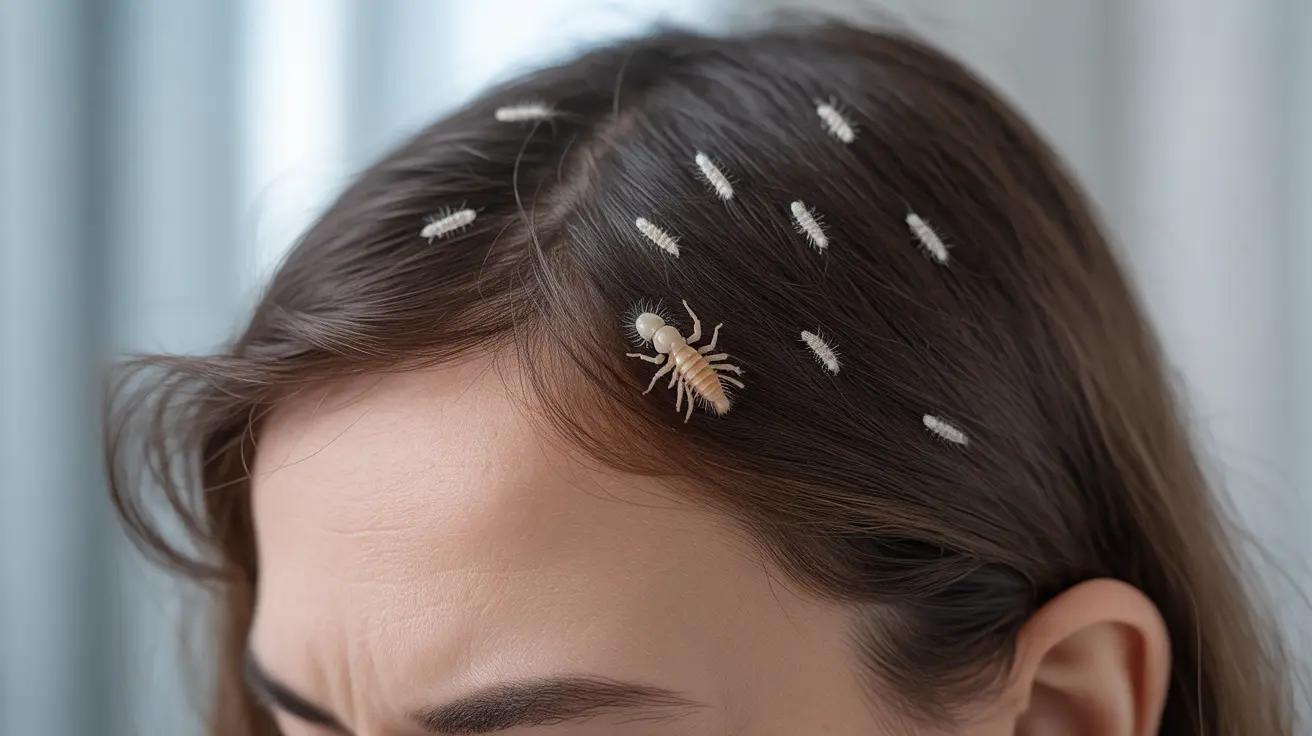Discovering head lice early can make treatment more effective and prevent the spread to others. Understanding the initial signs of a lice infestation is crucial for prompt identification and management. While some symptoms may take time to develop, knowing what to look for can help you catch these persistent parasites before they become a bigger problem.
This comprehensive guide will help you identify the beginning signs of lice, distinguish between lice eggs and common scalp conditions, and understand why certain symptoms may be delayed. We'll also cover effective methods for checking your scalp and recognizing early warning signs in children.
Common Early Warning Signs of Head Lice
Head lice can present several initial symptoms that may vary in intensity and timing among different individuals:
- Tickling sensation on the scalp
- Mild scalp irritation
- Small red bumps around the hairline
- Visible eggs (nits) near the scalp
- Fine black powder (lice droppings) on pillowcases
The Telltale Itching
While itching is commonly associated with lice, it's important to note that this symptom might not appear immediately. The delayed itching occurs because it takes time for an individual to develop sensitivity to lice saliva. Some people may harbor lice for several weeks before experiencing significant itching.
Identifying Lice and Their Eggs
Proper identification is crucial for confirming a lice infestation. Here's what to look for:
Adult Lice Characteristics
- Grayish-white to tan in color
- Size of a sesame seed (2-3mm)
- Six legs with claws
- Fast-moving and avoid light
Nits (Lice Eggs)
Nits have distinct characteristics that set them apart from dandruff or hair debris:
- Tear-drop shaped
- Firmly attached to hair shafts
- Located within 1/4 inch of the scalp
- Yellowish to pearl-white in color
- Don't brush away easily
Checking for Lice at Home
Following these steps can help you conduct an effective head check:
- Use bright lighting
- Part the hair in small sections
- Check the scalp thoroughly, especially behind ears and near the neck
- Use a specialized lice comb for detection
- Examine the comb after each stroke
Impact on Sleep and Behavior
Early lice infestations can affect daily life before obvious symptoms appear. Children may experience:
- Restless sleep
- Increased irritability
- Difficulty concentrating
- Unexplained neck sensitivity
- General discomfort
Frequently Asked Questions
What are the earliest signs and symptoms that someone has a lice infestation?
The earliest signs include a tickling sensation on the scalp, small red bumps around the hairline, and visible nits near the scalp. You might also notice fine black powder (lice droppings) on pillowcases before other symptoms become apparent.
How can I tell the difference between lice eggs (nits) and dandruff or hair debris?
Nits are firmly attached to hair shafts and cannot be easily brushed off, unlike dandruff. They're tear-drop shaped, located close to the scalp, and have a yellowish to pearl-white color. Dandruff is typically white, flaky, and easily falls off the hair.
Why does itching sometimes take weeks to appear after getting lice?
Itching develops as an allergic reaction to lice saliva. It can take several weeks for the body to develop this sensitivity, which explains why some people don't experience itching immediately after becoming infested.
What are the best ways to check for live lice and nits on the scalp at home?
Use bright lighting and a fine-toothed lice comb to systematically section and examine the hair, focusing on areas close to the scalp, behind the ears, and near the neckline. Look for moving lice and firmly attached nits within 1/4 inch of the scalp.
Can lice cause difficulty sleeping or irritability in children before the infestation is obvious?
Yes, children may experience sleep disturbances and increased irritability before other obvious symptoms appear. This is due to the physical presence of lice moving on the scalp and feeding, even before itching develops.




